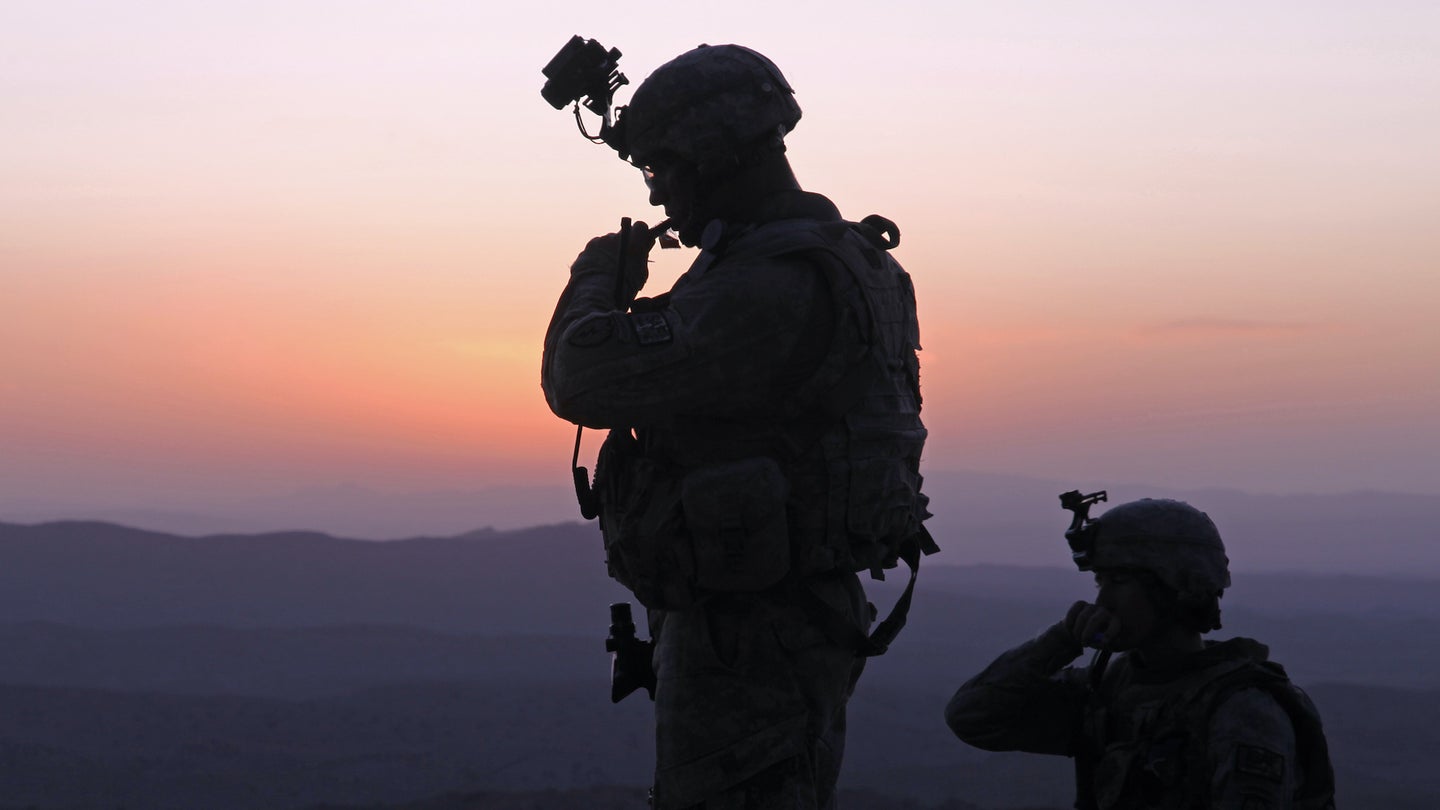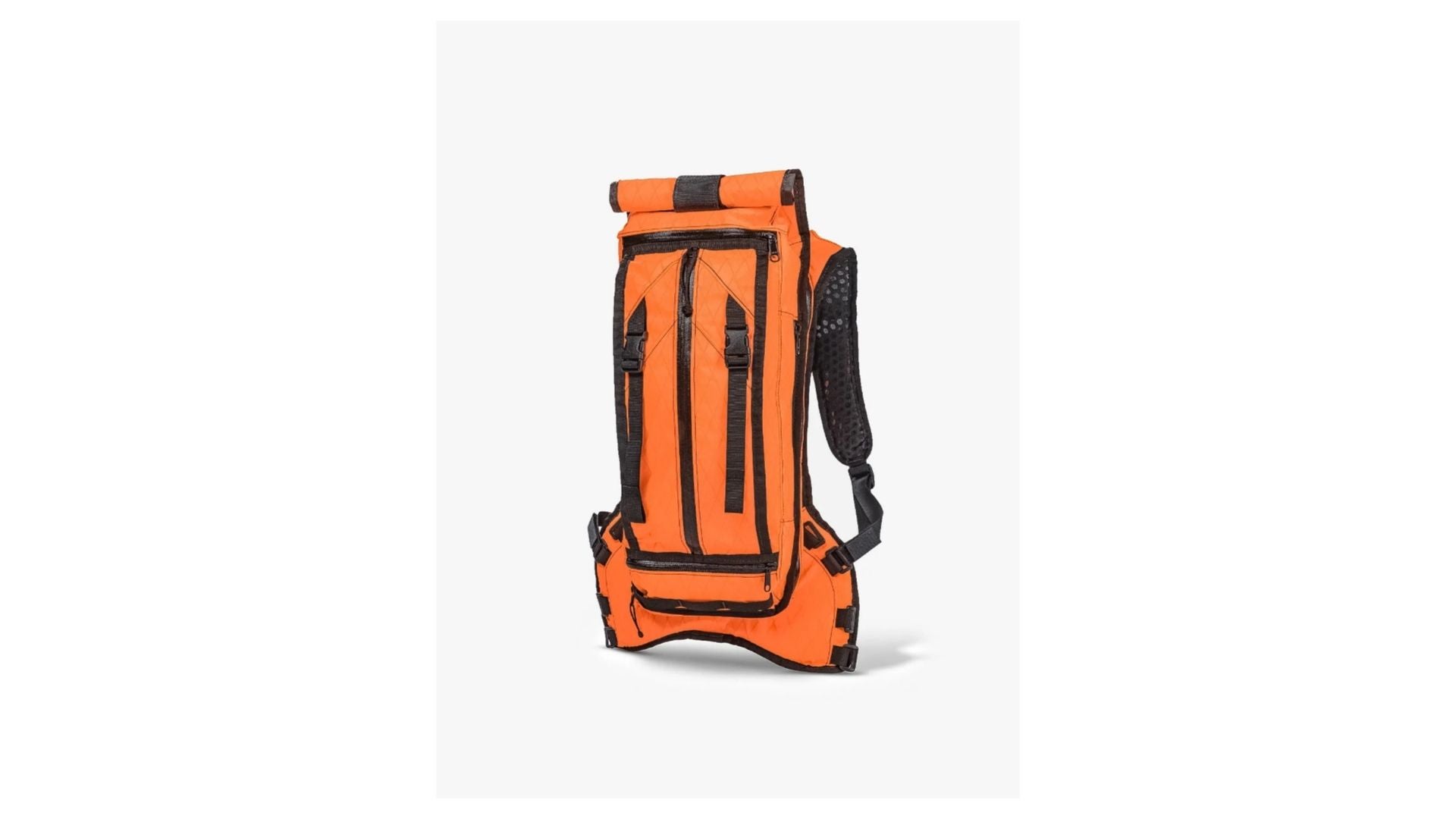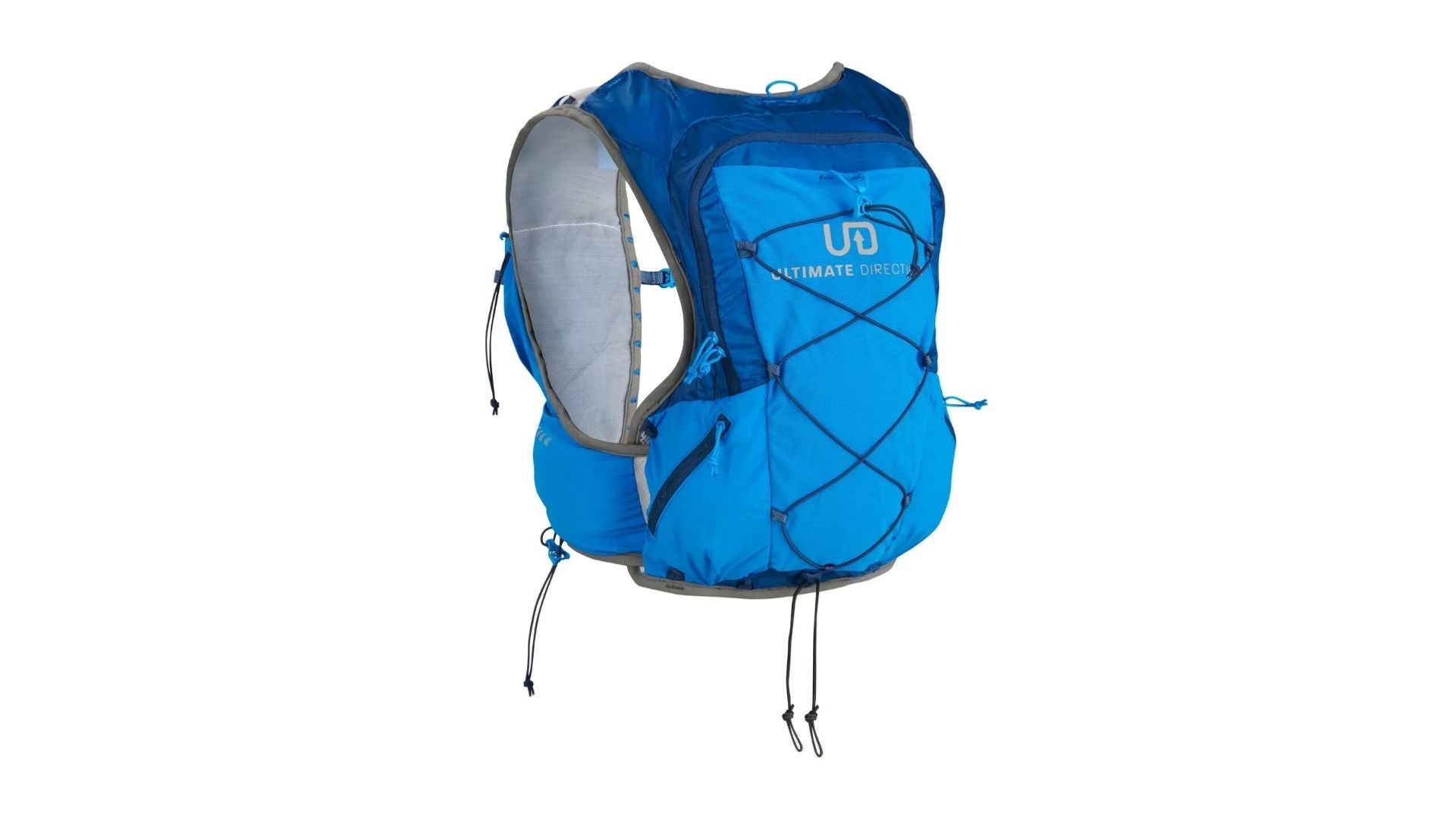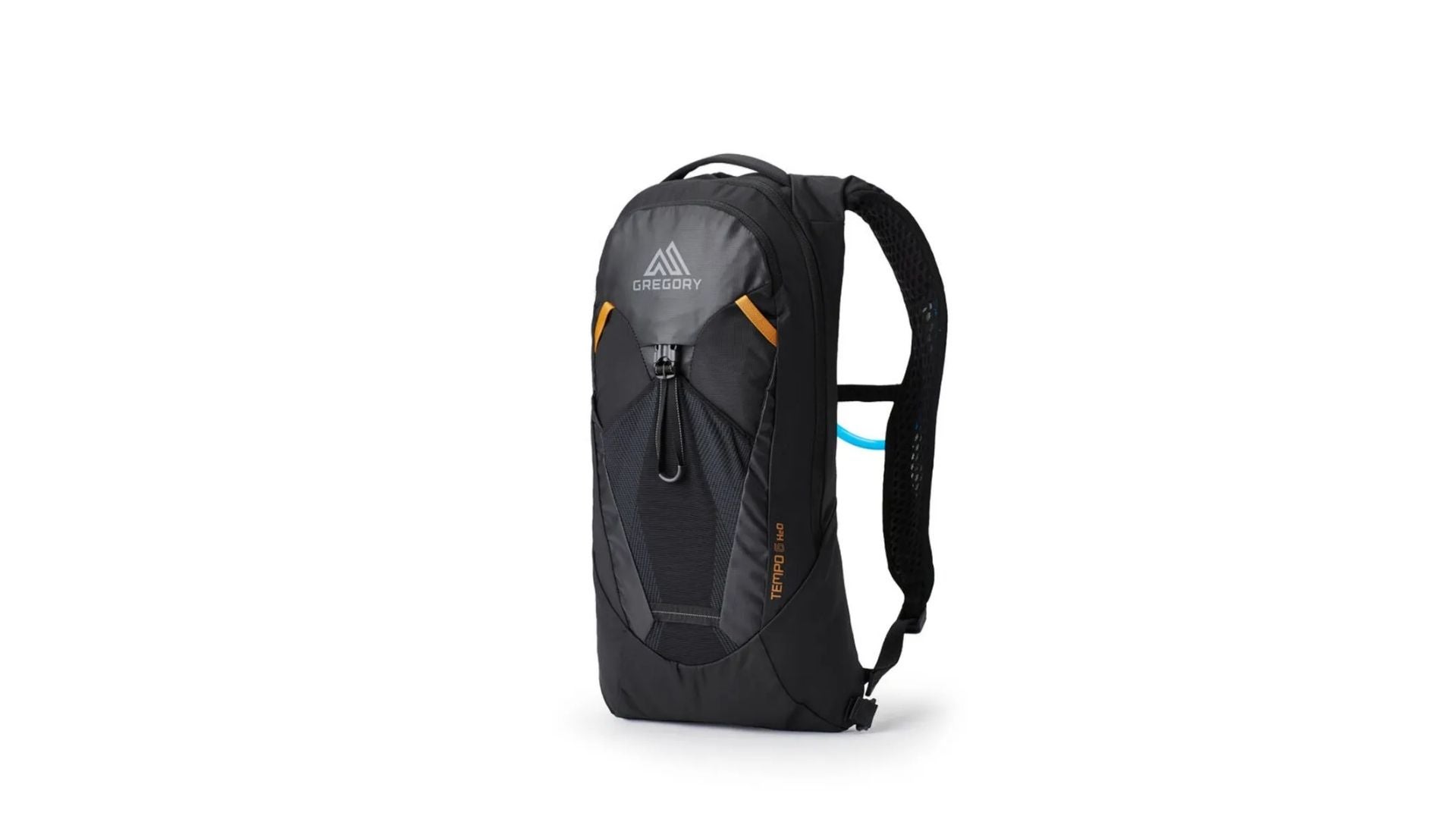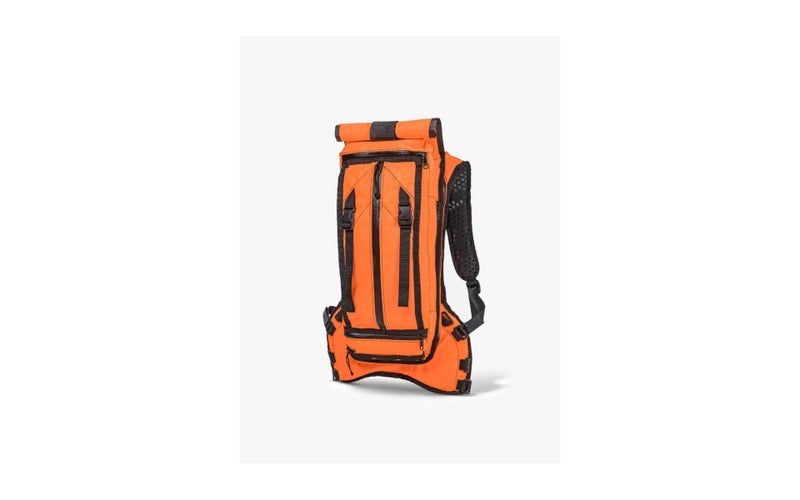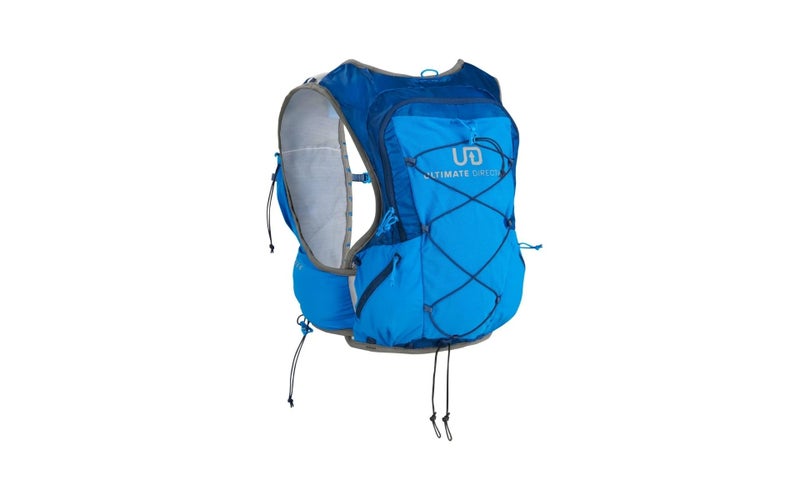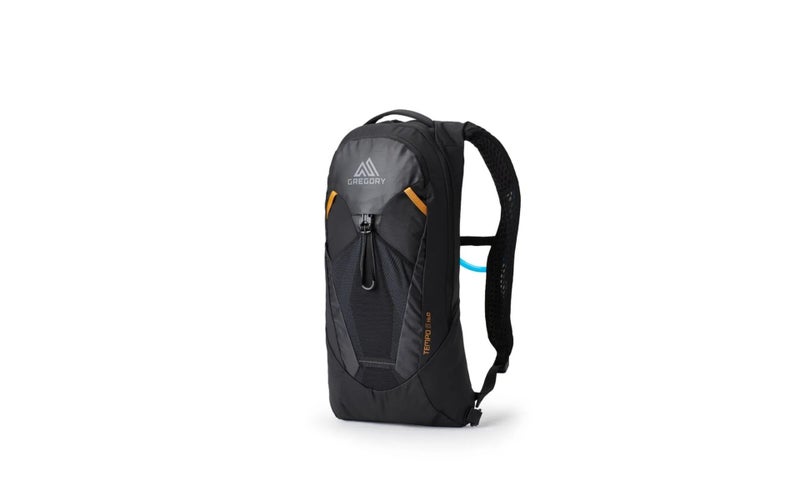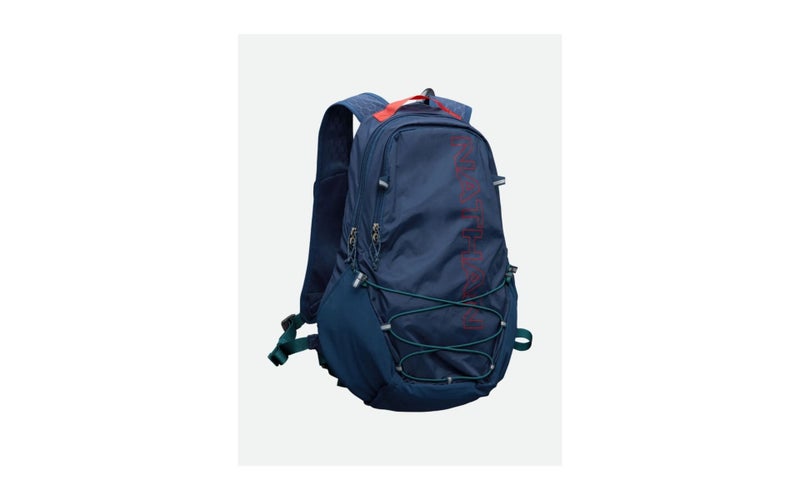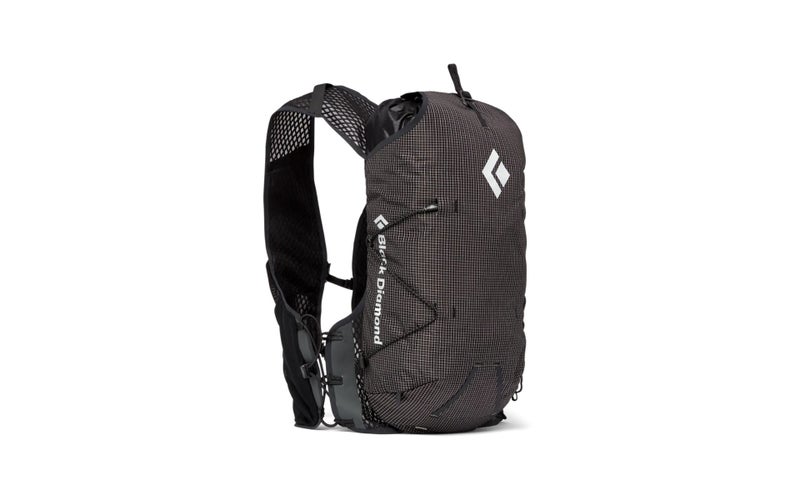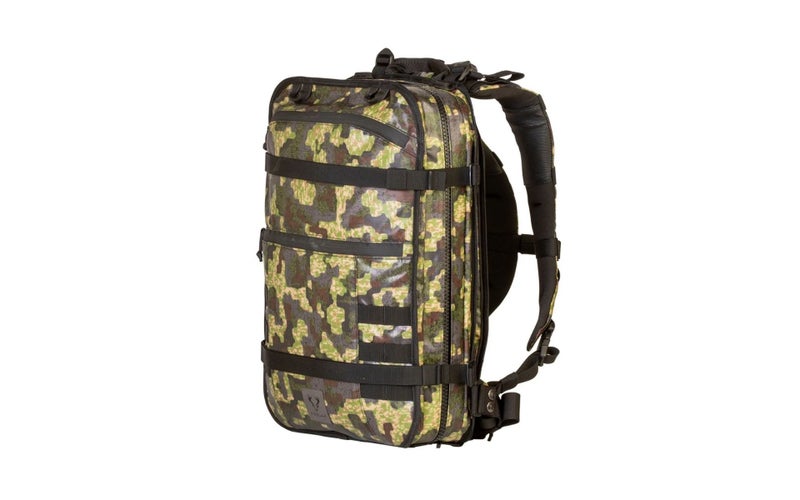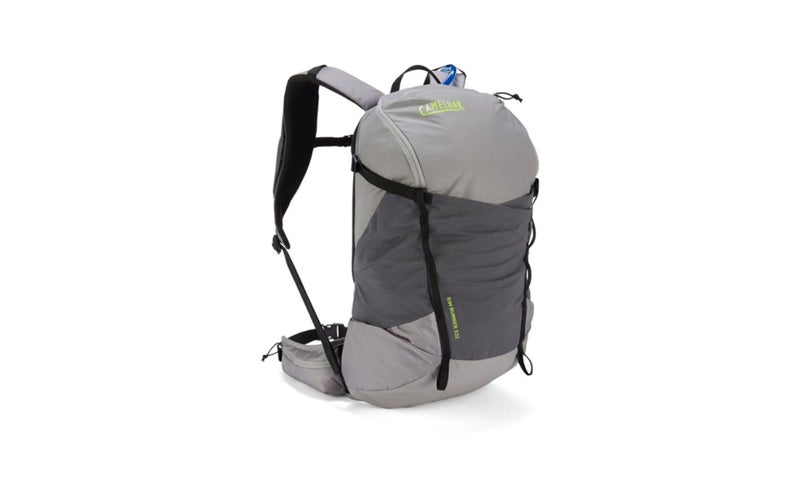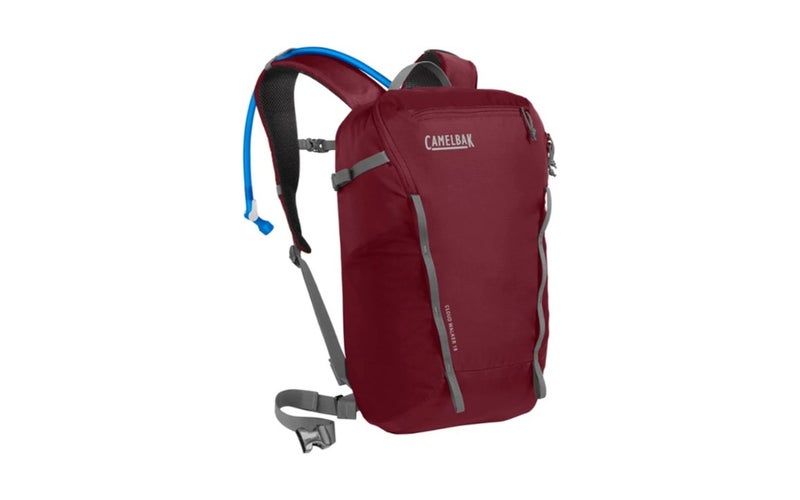We may earn revenue from the products available on this page and participate in affiliate programs.
There is a bewildering array of backpacks and hydration packs on the market — all designed for myriad purposes from hiking to cycling to climbing. For this review, we took a look at what’s currently on the market in both hydration backpacks and running vests. We don’t want you to succumb to a heat injury and get the “silver bullet” from the medic or corpsman. Despite this narrow focus on hydration packs, the challenge remained, as there are also a bewildering number of hydration packs and vests being sold. So we took a look in stores and online to see what was being offered, got our hands on some of the best for our own inspection and evaluation, and also checked out what other experts, professional outdoor athletes, and everyday users thought.
Read on to find which hydration pack or vest best meets your unique needs.
- Best Overall and Best for Cycling: Mission Workshop Hauser 10L
- Best Premium and Best for Ultra Trail Running: Ultimate Direction Ultra Vest 6.0
- Best Insulated and Best for Mountain Biking: Gregory Tempo 6 H2O
- Best Value and Most Versatile: Nathan Crossover 15L
- Best for Mountain Running: Black Diamond Distance 8
- Best for Hunting and Best Waterproof: FORLOH The One Pack
- Best for Day Hiking: CamelBak Rim Runner X 22
- Best Budget and Best for Beginners: CamelBak Cloudwalker 18
When I first saw this pack, I had visions of bicycle couriers zipping through the streets of lower Manhattan or climbing the hills of San Francisco. Its long, low-profile design and removable bike tool roll just scream cycling and, sure enough, that’s exactly who the designers were thinking of when they designed the Hauser 10L. This hydration pack is made from quality materials and offers three choices of pack fabric: Dimension Polyant X-Pac, HT500, or MultiCam-Black Cordura. All are waterproof and the choice is cosmetic.
The back panel and shoulder straps of the Hauser 10L are super comfortable and perforated for airflow, and the back panel is designed with an internal frame sheet for increased rigidity. The back of the pack has four weatherproof exterior pockets with nice waterproof zippers and straps for hanging a bike helmet. Between the roomy main cargo compartment and the back panel is a full zippered pocket for hydration reservoirs up to three liters. I was able to (barely) stuff a CamelBak Fusion 3L reservoir in it with just enough room.
It’s nice that the designers considered all the various reservoir suspension systems and ensured the Hauser 10L is compatible with all. The aforementioned bike tool roll is well-designed with four zippered organization pockets and clip closure. I love this design for on-the-road repairs because I can lay all my tools out flat and see them without having a complete yard sale. The pouch below the tool kit has two 3/4-inch webbing straps with quick locks for expanded external carry options — a super handy feature.
The main cargo compartment is accessed by a roll-top closure and isn’t too fussy inside. It’s ideal for stuffing that hard-shell jacket, warming layer, gloves, and cap. The suspension system is super comfortable and adjusts at all the right places for a dialed-in fit, which is important when you’re bombing downhill on your bike and trying to keep balance. Both shoulder straps are connected with a sternum strap and drinking tube clip.
The Hauser 10L costs between $220 and $230, depending on which pack material you select. It also comes in a 14-liter variant for $230 to $240, again depending on pack material.
This is an exquisitely designed and well-made hydration pack, and it is an ideal choice for mountain bikers and city cyclists alike. Heck, I’d even take this along for a day hike or multi-pitch climb. It’s burly enough to withstand scrapes on rock faces, and the haul loop is substantial.
- Water capacity: Up to 3-liter reservoir (sold separately)
- Gear capacity: 10 liters
- Weight: 1 pound 14 ounces (850 grams)
- Torso length: 21 inches
- Waist: Up to 55 inches
- Hipbelt: Yes, multipoint and detachable
- Materials: Three options – Dimension Polyant X-Pac, HT500, or MultiCam-Black Cordura
- The Mission Workshop Hauser 10L is an awesome waterproof roll-top 10-liter hydration pack. It’s designed specifically for cyclists and it’s tough, comfortable, and exceptionally well-designed.
Low-profile
Waterproof roll-top closure
Waterproof exterior pockets
Framesheet for structure
CamelBak-, Hydrapak-, Platypus-, and Nalgene-compatible
Made in America
Lifetime warranty
Expensive
There’s an admirable cult of people in our society who enjoy running long distances — and by long, I mean 50, 100, or even 200 miles. I know — I’m married to one. If a marathon is just a warm-up for you, you’ll want to check out Ultimate Direction’s line of running vests.
When you’re putting down that many miles, every ounce counts. The Ultra Vest 6.0 is made from very lightweight and breathable stretch fabric that moves with your body. The vest is cut with wide armholes to provide comfort and freedom of movement without chafing. Unlike one-size-fits-all brands, Ultimate Direction knows the importance of good fit, so this vest comes in four sizes ranging from small to extra-large, and two adjustable and repositionable chest straps enable you to dial in the fit and keep the vest snug. Speaking of snug, the vest features a cinching system at the bottom of the pack that allows on-the-go tightening or loosening without impacting freedom of movement. There’s also a shock cord attachment to enable stowing collapsible trekking/running poles horizontally at the bottom of the pack.
As for storage, the harness has two pockets made to fit two 500-milliliter soft water bottles (included). I’m a big fan of collapsible/soft water bottles because as you consume water, they take up less space. Underneath the water bottle pockets on the shoulder straps are two small stretch pockets for small items like lip balm, sunscreen, and ibuprofen. Underneath the left breast water bottle pocket is a water-resistant phone pocket with a waterproof zipper. On the right shoulder strap is an attachment system to hold collapsable running/trekking poles when not being used — super handy. On the back are four pockets — two are zippered. The main waterproof compartment features a clamshell lid and is designed to store extra layers. It has a dedicated hydration pocket and can fit a two-liter water bladder (sold separately). The shock cord zig-zag system on the back of the pack can also hold easy-access items like a rain jacket or light warming layers.
This hydration vest is an ideal pick for ultra runners and fast packers.
- Water capacity: 2-liter reservoir and two 500-milliliter water bottles
- Gear capacity: 10.3 liters
- Weight: 8.11 ounces (230 grams) (pack only)
- Torso length: Four sizes from 23 to 52 inches
- Waist: N/A
- Hipbelt: No
- Materials: Silicon-coated nylon, Spandex
- Purpose-built for ultra long-distance trail running, the Ultimate Direction Ultra Vest 6.0 is a comfortable featherlight water-resistant vest designed to keep you fueled and hydrated, and prevent chafing.
Superior design
Ultralight materials
Water-resistant phone pocket
Carries up to three liters of water
Waterproof main pocket
Exceptional volume-to-weight ratio
Expensive
Phone pocket water-resistant, not waterproof
Reservoir not included
New for Fall 2022, the first thing you’ll notice when picking up the Gregory Tempo 6 H20 is the quality of the build. At first touch, it impressed me as a quality pack made from durable materials. It also felt heavier than other similar-sized hydration packs, so I unzipped it to find out why.
After opening the main compartment, you’ll find a U-shaped zipper leading to the dedicated insulated hydration bladder compartment. The insulated compartment combines a vapor barrier liner with multi-density foam insulation to keep water cold for up to four hours. I also appreciated how the reservoir attached to the pack via a speed clip, which was super easy to use and felt really secure.
Next, I pulled out the 3D Hydro reservoir and noticed a few details missing from other bladders. It had a nice spine-molded carrying handle and an integrated drying hanger on the opposite side of the bag from the fill port. Also, near the fill port is a convenient inline quick disconnect so you don’t have to unthread the drinking hose.
The drinking hose has a drylock push button bite valve at the tip for secure leak-free storage. And I appreciated the bag’s designers putting a high-power magnet in the bite valve housing so it can be secured to a metal disk on the sternum strap buckle. I hate it when the drinking hose flops around — a nice solution.
The back panel is made of 3D foam and mesh and is pretty comfortable, while also allowing for air circulation to help keep you cooler. One of the nicest features is the comfortable contoured, perforated, and breathable shoulder straps. Also, near the top of the pack is a beefy haul loop made from 1/2-inch tubular webbing and a quick-access top pocket. Conspicuously missing from the top pocket is a key lanyard. I hope future designs include one. At the bottom of the bag is a functional and minimalist removable hip belt which increases versatility and aids in proper fit. I also liked that Gregory went with 1/2-inch instead of one-inch webbing, which would be overkill for this bag.
The back of the bag has a nice stretch mesh pocket for quick storage of small items like a hat or light warming layer or hardshell. The interior main compartment holds about six liters of gear and has two stash pockets ideal for snacks or beverage mix powders. At 1.34 pounds, it’s a little on the heavy side for me for running, but this pack would be great for day hikers or mountain bikers who are looking for a well-designed and quality-built bag and are willing to carry a few more ounces of insulation to enjoy icy cold water — a good trade-off. Oh, and it has a DWR finish which helps increase its water resistance. Note that the zippers and bag are not waterproof. While Gregory’s website touts male and female variants, I was unable to find women’s models for purchase. Hopefully, that is forthcoming this fall.
- Water capacity: 2 liters
- Gear capacity: 6 liters
- Weight: 1 pound 5.4 ounces (608 grams)
- Torso length: 18 to 22 inches
- Waist: Up to 48 inches
- Hipbelt: Yes, removable
- Materials: 210D PU-coated nylon with DWR
Well-thought-out two-liter bladder with extra features
Insulated, keeps water cold two times longer
3D breathable foam back panel
Four gear organization pockets
High-quality build
Molded loop zipper pullers
Removable hip belt
Pricy
Heavier than most
No key lanyard
If you’re looking for a running hydration pack that you can also take cycling or hiking, look no further than the Nathan Crossover line of packs. Ranging in sizes of five, 10, and 15 liters, you’re sure to find one with the carrying capacity you need. For this evaluation, we tested the 10-liter pack. Nathan has been making high-quality yet affordable clothes, sunglasses, and gear for runners for years, and the Crossover didn’t disappoint. In fact, it really impressed me — especially for its quality build and it weighs in at less than a pound.
This lightweight pack’s design is superb in that it is body-conforming to eliminate bounce, has multiple adjustment points (to include two sternum straps and a removable hipbelt) for a dialed-in fit, and has generous storage capacity and multiple pockets. One thing I always hated about running with a hydration pack was the inevitable chafing on hot days. Nathan has found a solution by making this pack out of moisture-wicking woven fabric with chafe-free binding materials and breathable shoulder straps.
The Crossover comes with a nice 1.5-liter bladder with a magnetic hose clip, two main back zipper pockets with interior organization pockets, and two 40-degree angled side pockets for additional water bottles or light layers of clothing. There’s also a bottom stash pocket, bike helmet loop, and bungee retention system. The suspension system is comfortable and the shoulder straps come with two zippered pockets (one per strap). I also liked that it had reflective details for 360-degree visibility in low light conditions.
All told, this is a very versatile pack that’s primarily designed with runners in mind, but will also accommodate the needs of cyclists and day hikers. With care, it should provide years of dependable service and performance.
- Water capacity: 1.5 liters
- Gear capacity: 10 liters
- Weight: 14.53 ounces (412 grams)
- Sternum length: 22 to 45 inches
- Hipbelt: Yes, removable
- Materials: 60 percent nylon, 40 percent polyester
- This versatile and lightweight hydration pack provides great comfort, extra storage capacity, and a secure fit for multisport outings to include running, mountain biking, and hiking.
Lightweight Bounce-free design
Chafe-free materials
Extra storage capacity
Removable hipbelt
Angled stretch water bottle pockets
Helmet loop and bungee retention
Not water-resistant
The Black Diamond Distance 8 is made from ultra-high molecular-weight polyethylene (UHMWP) ripstop yarns, which are 10 times stronger than steel per weight, so light they float in water, and it’s an ideal pack for fast and light missions in the mountains. Having owned Black Diamond’s Speed 40 mountaineering pack (which I love) for years, I had high expectations for high-end performance from the Distance 8, and it didn’t disappoint.
The body of the pack is made from Dynex (100D nylon and 200D PE) with Dynex ripstop yarns for tear resistance. Like most running packs, the shoulder straps have a variety of pockets — six in all — including a zippered cell phone pocket, two 500-milliliter hydro flasks (sold separately) pockets (one per side), and dual bottom pockets which are ideal for snacks, lip balm, sunglasses, AirPods, a satellite communicator, and other quick-access items. Some users noted that the lower positioning of the water bottles made them a bit harder to drink out of while on the go. Connecting the shoulder straps are two adjustable and repositionable sternum straps to help dial in a comfortable fit. I liked that the top strap was not elasticized while the bottom fully was, which helped keep the water bottles from moving around too much when running.
On the back side of the pack, there’s an attachment system to carry two ice axes and two Z-pole quiver sleeves to stow foldable trekking poles. Both sides of the pack have adjustable elastic cording that serves as a compression system for the main pack and also retains ice ax handles. The back panel is made from BD Dry — a vapor barrier that lets sweat and vapor escape while keeping the pack’s contents dry. The main compartment is fully water-resistant for four-season use. The interior features a roomy main storage area with an interior mesh divider to hold a water bladder (sold separately) or alpine cordelette. It also has an interior zippered pocket to secure important items like wallets and keys. This pack is ideal for mountain runners. It also comes in a larger 15L version and a smaller Distance 4 running vest.
- Water capacity: Two 500-milliliter water bottles
- Gear capacity: 8 liters
- Weight: 12.5 ounces (355 grams) (pack only)
- Torso length: Four sizes from 23.6 to 44 inches
- Waist: N/A
- Hipbelt: No
- Materials: UHMWPE 100D Nylon 4-millimeter ripstop
- The Distance 8 hydration pack is made by one of the very best alpine pack makers and is dialed-in for peak performance above the treeline.
Bombproof materials
Exceptional volume-to-weight ratio
Ice ax retention system
Hiking pole sleeves
Superior fit
Expensive
Water bottles not included
Low water bottle positioning
Undeniably, the FORLOH The One Pack is an exceptionally well-made low-profile backpack constructed from durable, quality materials and designed to meet the needs of hunters. You only need to heft it once to feel its quality. This 22-liter pack features comfortable one-piece memory foam shoulder straps, a roomy single main chamber, a substantial removable hipbelt, and a versatile design.
The exterior is made from very beefy 210D double-sided PU-coated diamond ripstop nylon. To my ultralight mountaineering and long-distance backpacking sensibilities, the pack is overbuilt — weighing four pounds five ounces to carry 22 liters of gear. By comparison, my Osprey Aether Pro mountaineering pack has 70 liters of capacity and weighs five ounces less. But set that aside because hunters have different needs from climbers, and this pack reminds me of some of the packs I carried in the Marine Corps — built to withstand a lot of abuse over many years.
One of the most interesting design decisions in The One Pack was to include a watertight YKK Aquaseal zipper which creates a fully-submersible dry bag main compartment (manufacturer tested to 200 feet). So the good news is that you get a watertight main compartment, and the bad news is you get the extra weight to carry. Across the back of the pack are two compartments with waterproof zippers and two removable compression straps finished with nice but heavy metal hooks — designs to attach a rifle, bow, or skis. On the top of the pack is a sturdy haul loop stitched into the pack fabric.
The main interior storage area is accessed via the previously mentioned YKK Aquaseal zipper, and the clamshell design allows the pack to fully open and be laid flat. Inside the main compartment is a laptop pocket — and that’s it — no other organization pockets. The lining fabric is Velcro-compatible, and additional organizational pockets for hunting, fishing, and camera gear are sold separately.
Another great feature of this pack is the inclusion of a RECCO search and rescue reflector, stitched into the top of the shoulder strap suspension system. This is a Swiss product made from a diode and antenna that helps SAR find you if buried in an avalanche. The reflector is passive, requires no power source, and bounces a signal (up to 80 meters through the air or 20 meters through packed snow) back to a RECCO detector used by rescue teams. This is a great safety feature — especially for hunting in the backcountry in winter.
Between the main storage compartment and the back panel is a hydration bladder pocket. It has a zipper opening on the left side and a tube port on both the left and right sides of the bag. The Velcro loop at the top of the hydration bladder pocket will hold many makes of hydration reservoirs but will require some rigging with 550 cord for some CamelBak and other hook-based suspension systems. Also, no reservoir is included with the bag. The space is generous and will accommodate up to three-liter reservoirs.
One curious design decision was to put a zig-zag of shock cord on the bottom of the pack to carry extra gear. I’d prefer to see such an attachment system across the back of the pack to keep the gear from swinging around and hitting you in the butt every step. Also, across the back are two MOLLE-compatible attachment points and six attachment points (two at the top and four at the bottom).
Lastly, at $599, this pack is truly a premium purchase. It is very well-made (in America) and comes with a lifetime warranty, but I did experience some sticker shock when I looked up the price. It’s a technical pack — one that I’m confident will meet the needs of hunters very well.
- Water capacity: Up to 3-liter reservoir (sold separately)
- Gear capacity: 32 liters
- Weight: 69 ounces (1,956 grams) (pack only)
- Torso length: 21 inches
- Waist: Up to 48 inches
- Hipbelt: Yes, detachable
- Materials: 210D PU-coated diamond ripstop nylon
- This fully waterproof (yes, you read that right) pack is made in America from extremely rugged, durable materials, and is purpose-built for the needs of hunters.
Waterproof, floats
Made from high-quality materials
Well-considered design features
Made in America
Lifetime warranty
Pricy
Heavier than other 22-liter packs
Marginal volume-to-weight ratio
CamelBak has been making quality hands-free hydration packs for decades and have come a long way since Mike Edson built his first prototype from an IV bag, tube sock, hose, and clothespin. I’ve used various military CamelBak variants over the years, but this was my first encounter with its civilian backpacks, and the Rim Runner X 22 immediately impressed me as a solid choice for all-day hiking, especially in warmer temperatures.
The Rim Runner X22 is designed with an Air Support back panel that provides decent ventilation with generous scapular and lumbar pads. The hip belt is fully integrated (not removable) and wide enough to provide decent weight transfer to the hips. Both sides of the hip belt come with integrated pockets for small items like sunglasses, lip balm, and other items to keep at the ready. On the left shoulder, you’ll find Rim Runner X’s “Command Center,” which is really just a nice mesh pocket to store your phone. Some users reported the pocket wasn’t large enough for their phone, but my iPhone 12 fit just right. On the right shoulder is the drinking tube clip. Connecting both is an adjustable and removable sternum strap.
The top of the pack has a haul loop made from thin one-inch webbing that’s sewn into the pack fabric but not connected to the back frame. While fine for hiking, it’s not the burliest and I’d think twice before hauling it up a rock face fully loaded. The reservoir and drinking tube are best in class as you’d expect from CamelBak, and the beauty of the X 22 is that there’s room for a three-liter bladder, as well. If you are looking for more capacity, check out CamelBak’s Fusion 3L Reservoir.
The sides and back of the pack are well-thought-out with a pocket on each side for additional water bottles and some really nice hook-style compression straps. The back of the pack has a double-layer overflow pocket between two thin daisy chains for stuffing light jackets, hats, or other items into. The top of the pack has exterior and interior zippered pockets for easy-access items.
The interior also has a retention lanyard for keys which is nice. CamelBak didn’t get too fussy with the interior which allows for greater versatility in packing items. While it’s on the small side for an overnighter, you might be able to get away with it if you have an ultralight tent or hammock and sleeping bag. Neither the zippers nor pack material is waterproof, so plan accordingly. At 28 ounces, it’s a little on the heavier side for similar packs, but keep in mind it also has more padding and a decent back framesheet for more stability. I also like that this pack comes in a female-specific variant with torso-conforming shoulder straps. This pack is a solid choice for day hikers or mountain bike cyclists who prioritize comfort and capacity more than weight.
- Water capacity: 2 liters
- Gear capacity: 20 liters
- Weight: 1 pound 12.2 ounces (800 grams)
- Torso length: 17 to 21 inches
- Waist: 26 to 56 inches
- Hipbelt: Yes
- Materials: 70 percent polyester, 30 percent nylon
- This light backpack has the internal storage capacity for a full two liters of water, plus another 22 liters of gear — enough for a full day on the trails.
Two-liter water bladder (three-liter capable)
Breathable air mesh construction
Load-bearing hip belt with pockets
Adjustable and removable sternum strap
Comfortable shoulder straps with pocket
Female-specific variant
Hip belt not removable
Phone pocket on shoulder strap may not fit larger phones
At an $80 price point, the Cloud Walker 18 represents CamelBak’s entry-level day-hiking pack. While the materials, design, and build aren’t as nice as more premium-level packs, the Cloud Walker 18 provides people who want to get into hiking a very capable and well-made pack that will provide years of reliable service and sports a few features not commonly found on its competitors.
Let’s start with the positives. The pack is made from 200D recycled ripstop nylon with a durable water-repellent finish. While not waterproof, it will help keep the pack’s contents dry in mist or light drizzle. Most beginners overestimate the amount of water they’ll need, and CamelBak recognized this with the inclusion of a very nice 2.5-liter bladder with a great bite valve. People who are carrying water for themselves and their kids will appreciate the additional capacity. While I wish the reservoir had a quick disconnect so you don’t have to unthread the drinking tube from the pack to remove it, I also understand this would also add to the overall cost. The reservoir has a large opening and ergonomic handle to make refilling much easier, and the on/off lever at the bite valve prevents leaking.
CamelBak included two stretch pockets — one on each side of the pack to carry additional water bottles or stash small articles of clothing. Above each stretch pocket is a single compression strap with hook closure, which is a nice feature. The interior of the pack is roomy and has a panel to keep the reservoir separate from your gear. I really like that the hipbelt is removable for versatility, and the contoured shoulder straps are pretty comfortable under light loads. The external zippered stash pocket has a key lanyard inside — another nice feature. The back of the pack features two small daisy chains and two loops at the bottom for retaining collapsible hiking poles.
Now for the pack’s limitations. The back panel of the pack, while made from air mesh, lacks contouring for increased airflow. While not terrible, just know this pack will be sweatier on hot days than more expensive models. The haul loop at the top is stitched to the pack fabric — which should be fine for light hiking loads — but I’d think twice before clipping it to a carabiner and hauling it up a rock wall fully loaded. The ice ax-like loops at the bottom designed for retaining hiking poles isn’t the best solution. I’d like to see shock corded loops with toggle cord locks here in future models. And I’d also like to see a zig-zag of shock cord connecting the daisy chains on the back of the pack for additional gear stowage.
All told, this is a decent entry-level pack at a great price that throws in a few additional features not found in most competitors’ packs. With care, this pack should provide day hikers with many years of commendable service at an affordable price point.
- Water capacity: 2.5 liters
- Gear capacity: 15.5 liters
- Weight: 1 pound 13 ounces (790 grams)
- Torso length: Four sizes from 38 to 48 inches
- Waist: 26 to 46 inches
- Hipbelt: Yes, removable
- Materials: 200D recycled ripstop nylon
- At $80, this well-made entry-level hydration pack provides a generous capacity, comfort, versatility, and a few other features not usually found on entry-level models.
Affordable
Large capacity for water and gear
Comfortable shoulder straps
Great hydration bladder
Removable hipbelt
Water bottle pockets
Trekking pole attachment point
Fairly lightweight
Back panel lacks ventilation
Interior lacks organization pockets
Things to consider before buying a hydration pack
Hydration packs, vests, or waist packs
When it comes to carrying water, you generally have three options: wearing a pack, vest, or waist pack. While they all hold water, they typically differ in how much water, how you drink it, and how much extra gear you can carry.
Packs
Hydration packs are the largest of the three (and the subject of this article), and they’re typically designed for hikers or cyclists. While they may look a lot like a regular backpack from the outside, they’re equipped with special pockets in the main chamber to suspend a hydration bladder and keep it separate from other gear.
Vests
Hydration vests are designed with runners and fast packers in mind. They fit much more tightly to the body and generally have 500-milliliter water bottles on the front of the shoulder straps. Many can also accommodate a hydration bladder. Most have two sternum straps, omit a hipbelt, and have multiple pockets around the vest to stow gear.
Waist packs
Waist packs are the smallest of the lot and resemble a fanny pack designed to carry a single water bottle. They’re good for shorter excursions where you don’t need to carry a lot of other gear.
Capacity
When evaluating capacity, consider how much water you want to carry (it gets heavy), and what extra gear you need for your outing (cargo space). Many hydration packs and vests come with pockets to accommodate 500-milliliter soft bottles, and one-, 1.5-, two-, or three-liter water bladders.
Keep in mind that one liter of water weighs 2.2 pounds, so I try to go as light as I can while keeping a bit of margin in reserve. The longer the distance between water points and the hotter the weather, the more water you will want to carry.
For cargo, many hydration packs come in five-, 10-, 15-, or 20-liter sizes. The smaller ones are for shorter outings and might stow your water and a bit of food and a warming layer or softshell. The larger ones are generally for all-day hikes and ultralight overnighters.
Fit
The way your pack fits your body is important for several reasons. First, comfort is key. Few things are more miserable than a poorly fitting pack or vest that chafes, digs into your shoulders, or puts you off balance. When moving — especially running — proper fit helps keep the pack from bouncing around. So pay attention to the waist size and torso length. Look for packs and vests that come in multiple sizes rather than one-size-fits-all (and poor) designs. Many manufacturers are now making packs specifically for women that are better contoured to the female body. Try them on before you buy and make sure you load them up — don’t just try them on empty.
FAQs about hydration packs
Q: Is a hydration pack worth it?
A: It depends. Hydration packs are designed for long-distance endurance sports athletes like hikers, cyclists, and even runners. The pack allows them quick access to water while keeping their hands free. However, some people may prefer to carry a bottle in their hand or inside of a standard backpack.
Q: How long does water stay cold in a hydration pack?
A: It depends on two things: the ambient air temperature and the insulative properties of the hydration backpack. On a cold day, your water will stay cold all day and might even freeze (which is a big problem for hydration bladders’ drinking tubes because they may clog with ice). On a warm day, how much insulation is around the bladder and the temperature of the water when the bladder is filled are the main determinants. Some packs, like the Gregory Tempo 6, are designed with extra insulation and a vapor barrier to help keep water colder longer. This extra insulation also means extra weight, so it’s a trade-off.
Q: When should I use a hydration pack?
A: You should consider using a hydration pack anytime you are exercising outdoors for prolonged periods of time away from a water source. Hydration packs are ideal for trail running, road running, cycling, mountain biking, skiing, ultra running, backpacking, fastpacking, climbing, mountaineering, kayaking, and more. In many instances, hydration packs or vests are far more convenient than canteens since they are designed to carry water on your body in a comfortable and efficient manner.
Q: Can you freeze water in a hydration bladder?
A: You can freeze water in a hydration bladder, but be careful of several things. First, don’t fill the bladder to capacity. When water freezes, it expands and you could burst that expensive Fusion 3L bladder you just spent $60 on. Also, be careful not to drop your frozen hydration bladder because it could split. I recommend filling it about half full, freezing it (making sure the water isn’t going to be frozen in the tube), and then filling the rest with water just before you leave your house. Also, storing your empty, air-dried bladder in the freezer is a great way to prevent mildew.
Q: Is a hydration pack good for hiking?
A: Does a bear crap in the woods? Of course, they are good for hiking and many other outdoor sports. Put it this way: If you are far from a water source, a hydration pack is a great way to efficiently and ergonomically carry your water and avoid heat-related illnesses like dehydration or heat stroke.
Final thoughts
As you can see, there are a lot of fine hydration packs on the market, and it was a real challenge to rack and stack them all. I picked the Hauser 10L as the best overall because of its versatility. It’s exceptionally well-made and can be easily adapted to many different outdoor sports. The quality of the build is well above par, and it’s waterproof and lightweight.
Methodology
All the hydration packs and vests in this review were selected based on personal ownership, hands-on inspection, and thoroughly reviewing manufacturers’ specifications. We take our time to get to know the strengths and weaknesses of each item and also check out the reviews of other experts just to make sure we’re not missing anything.
For this review, we considered more than a dozen makes and models. We parsed between packs and vests — those for everyday use and more specialized products — and tried to provide solid representatives of each category. I based my criteria on my own experiences using outdoor gear in the field for more than 35 years.
After gathering enough high-performing products for a best-of article, I racked and stacked each based on their attributes, design, and performance. My bias is towards the lightest, best-functioning, and lowest-cost solutions available. We don’t torture test gear here at Task & Purpose — we test within normal usage limits. When gear does fail or break, we contact the manufacturer to see if and how it stands by its products. I also take a look at how easy the gear is to maintain or repair in the field — the simpler, the better.
Task & Purpose and its partners may earn a commission if you purchase a product through one of our links. Learn more about our product review process.
